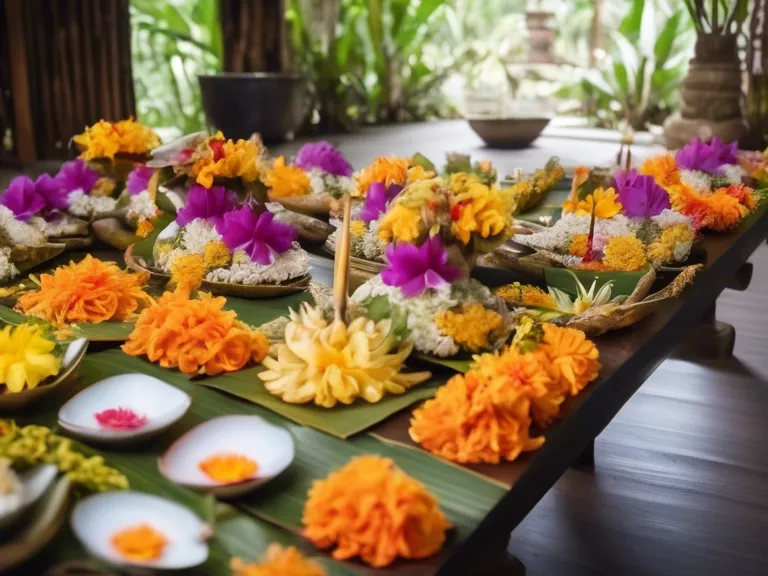
In the practice of yoga, gratitude plays a significant role in cultivating an attitude of contentment and acceptance. One way this practice is emphasized is through the tradition of Balinese offerings. These offerings, called "canang sari," are a common sight in Bali and are a form of giving thanks to the divine for all the blessings in one's life.
Made from woven palm leaves and filled with flowers, rice, incense, and other items, these offerings are meticulously prepared by Balinese people every morning and placed in various locations such as temples, homes, and street corners. The act of creating and presenting these offerings is a way for individuals to express their gratitude for the abundance in their lives and show reverence to the higher powers.
In the practice of yoga, the act of making offerings can be seen as a form of mindfulness and gratitude. By taking the time to create something beautiful and meaningful, practitioners are reminded of the abundance in their own lives and the importance of expressing gratitude for it. This practice helps shift one's focus from lack to abundance and cultivates a sense of contentment and peace.
Furthermore, the practice of gratitude in yoga extends beyond physical offerings. It also involves acknowledging and appreciating the little things in life – the breath, the body, the present moment. By cultivating an attitude of gratitude, practitioners can open their hearts to receive more blessings and stay connected to the essence of yoga – union with the divine.
Incorporating the tradition of Balinese offerings into the practice of yoga can deepen one's connection to the spiritual aspect of the practice and enhance the sense of gratitude and reverence. By taking the time to create and present offerings, practitioners can express their thankfulness for the abundance in their lives and cultivate a sense of contentment and peace.



